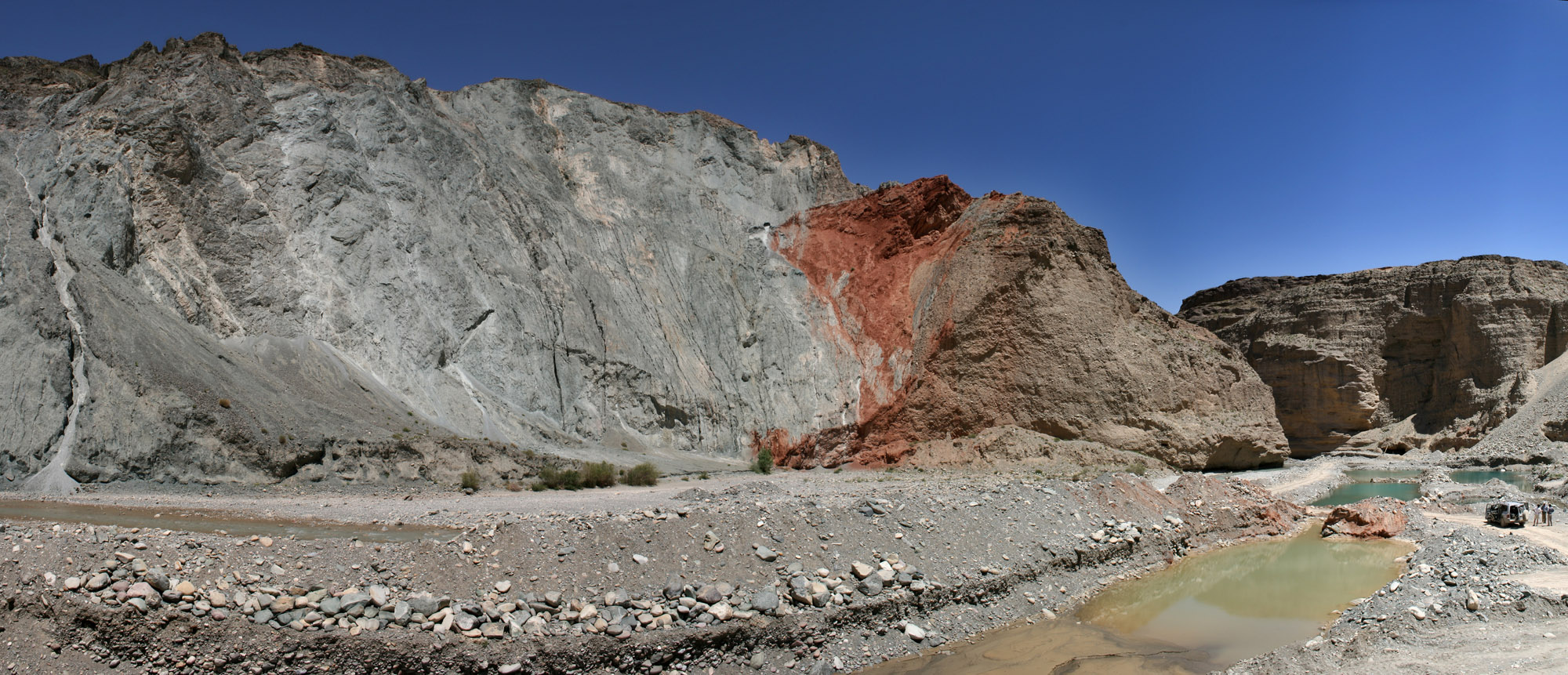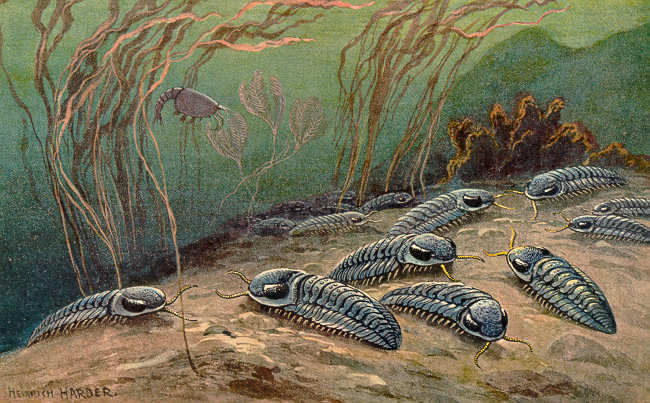|
Carmel Head Thrust
The Carmel Head Thrust is a geological fault on Carmel Head in north Anglesey, Wales, where rocks of the Precambrian Mona Complex are thrust over Lower Paleozoic sedimentary rocks. See also *List of geological faults of Wales This is a list of the named geological faults affecting the rocks of Wales. See the main article on faults for a fuller treatment of fault types and nomenclature but in brief, the main types are normal faults, reverse faults, thrusts or thrust fa ... References Geology of Wales Cylch-y-Garn {{Wales-geo-stub ... [...More Info...] [...Related Items...] OR: [Wikipedia] [Google] [Baidu] |
Fault (geology)
In geology, a fault is a planar fracture or discontinuity in a volume of rock across which there has been significant displacement as a result of rock-mass movements. Large faults within Earth's crust result from the action of plate tectonic forces, with the largest forming the boundaries between the plates, such as the megathrust faults of subduction zones or transform faults. Energy release associated with rapid movement on active faults is the cause of most earthquakes. Faults may also displace slowly, by aseismic creep. A ''fault plane'' is the plane that represents the fracture surface of a fault. A '' fault trace'' or ''fault line'' is a place where the fault can be seen or mapped on the surface. A fault trace is also the line commonly plotted on geologic maps to represent a fault. A ''fault zone'' is a cluster of parallel faults. However, the term is also used for the zone of crushed rock along a single fault. Prolonged motion along closely spaced faults can bl ... [...More Info...] [...Related Items...] OR: [Wikipedia] [Google] [Baidu] |
Carmel Head
Carmel Head ( Welsh: ''Trwyn y Gadair'') is a prominent coastal headland on the northwest tip of the island of Anglesey. It is a designated SSSI because of its geological interest for the Carmel Head Thrust fault where Precambrian rocks have been pushed over younger Ordovician rocks creating the Carmel Head thrust. Rock exposures along the cliffs of Carmel Head include Precambrian gneisses, which are almost certainly the oldest rocks in Wales. Off-shore from the head lie the islands of the Skerries and to the east of the Skerries three further islands, West Mouse, Middle Mouse and East Mouse. On West Mouse is a large white-painted column which is matched on Carmel Head by two further columns, known locally as the "Three White Ladies". They were constructed in the 1860s as navigation aids: lining up the three columns marks the position of a shallow reef offshore that was a grave danger to shipping. There are ruins of a copper mine and factory still in existence, including a wel ... [...More Info...] [...Related Items...] OR: [Wikipedia] [Google] [Baidu] |
Anglesey
Anglesey (; cy, (Ynys) Môn ) is an island off the north-west coast of Wales. It forms a Local government in Wales, principal area known as the Isle of Anglesey, that includes Holy Island, Anglesey, Holy Island across the narrow Cymyran Strait and some islets and Skerry, skerries. Anglesey island, at , is the list of islands of Wales, largest in Wales, the list of islands of the British Isles, seventh largest in Britain, List of islands in the Irish Sea, largest in the Irish Sea and second most populous there after the Isle of Man. Isle of Anglesey County Council administers , with a 2011 census population of 69,751, including 13,659 on Holy Island. The Menai Strait to the mainland is spanned by the Menai Suspension Bridge, designed by Thomas Telford in 1826, and the Britannia Bridge, built in 1850 and replaced in 1980. The largest town is Holyhead on Holy Island, whose ferry service with Ireland handles over two million passengers a year. The next largest is Llangefni, the cou ... [...More Info...] [...Related Items...] OR: [Wikipedia] [Google] [Baidu] |
Wales
Wales ( cy, Cymru ) is a Countries of the United Kingdom, country that is part of the United Kingdom. It is bordered by England to the Wales–England border, east, the Irish Sea to the north and west, the Celtic Sea to the south west and the Bristol Channel to the south. It had a population in 2021 of 3,107,500 and has a total area of . Wales has over of coastline and is largely mountainous with its higher peaks in the north and central areas, including Snowdon (), its highest summit. The country lies within the Temperateness, north temperate zone and has a changeable, maritime climate. The capital and largest city is Cardiff. Welsh national identity emerged among the Celtic Britons after the Roman withdrawal from Britain in the 5th century, and Wales was formed as a Kingdom of Wales, kingdom under Gruffydd ap Llywelyn in 1055. Wales is regarded as one of the Celtic nations. The Conquest of Wales by Edward I, conquest of Wales by Edward I of England was completed by 1283, th ... [...More Info...] [...Related Items...] OR: [Wikipedia] [Google] [Baidu] |
Thrust Fault
A thrust fault is a break in the Earth's crust, across which older rocks are pushed above younger rocks. Thrust geometry and nomenclature Reverse faults A thrust fault is a type of reverse fault that has a dip of 45 degrees or less. If the angle of the fault plane is lower (often less than 15 degrees from the horizontal) and the displacement of the overlying block is large (often in the kilometer range) the fault is called an ''overthrust'' or ''overthrust fault''. Erosion can remove part of the overlying block, creating a ''fenster'' (or '' window'') – when the underlying block is exposed only in a relatively small area. When erosion removes most of the overlying block, leaving island-like remnants resting on the lower block, the remnants are called ''klippen'' (singular '' klippe''). Blind thrust faults If the fault plane terminates before it reaches the Earth's surface, it is referred to as a ''blind thrust'' fault. Because of the lack of surface evidence, blind ... [...More Info...] [...Related Items...] OR: [Wikipedia] [Google] [Baidu] |
Paleozoic
The Paleozoic (or Palaeozoic) Era is the earliest of three geologic eras of the Phanerozoic Eon. The name ''Paleozoic'' ( ;) was coined by the British geologist Adam Sedgwick in 1838 by combining the Greek words ''palaiós'' (, "old") and ''zōḗ'' (), "life", meaning "ancient life" ). It is the longest of the Phanerozoic eras, lasting from , and is subdivided into six geologic periods (from oldest to youngest): # Cambrian # Ordovician # Silurian # Devonian # Carboniferous # Permian The Paleozoic comes after the Neoproterozoic Era of the Proterozoic Eon and is followed by the Mesozoic Era. The Paleozoic was a time of dramatic geological, climatic, and evolutionary change. The Cambrian witnessed the most rapid and widespread diversification of life in Earth's history, known as the Cambrian explosion, in which most modern phyla first appeared. Arthropods, molluscs, fish, amphibians, reptiles, and synapsids all evolved during the Paleozoic. Life began in the ocean bu ... [...More Info...] [...Related Items...] OR: [Wikipedia] [Google] [Baidu] |
Sedimentary Rock
Sedimentary rocks are types of rock that are formed by the accumulation or deposition of mineral or organic particles at Earth's surface, followed by cementation. Sedimentation is the collective name for processes that cause these particles to settle in place. The particles that form a sedimentary rock are called sediment, and may be composed of geological detritus (minerals) or biological detritus (organic matter). The geological detritus originated from weathering and erosion of existing rocks, or from the solidification of molten lava blobs erupted by volcanoes. The geological detritus is transported to the place of deposition by water, wind, ice or mass movement, which are called agents of denudation. Biological detritus was formed by bodies and parts (mainly shells) of dead aquatic organisms, as well as their fecal mass, suspended in water and slowly piling up on the floor of water bodies ( marine snow). Sedimentation may also occur as dissolved minerals precipita ... [...More Info...] [...Related Items...] OR: [Wikipedia] [Google] [Baidu] |
List Of Geological Faults Of Wales
This is a list of the named geological faults affecting the rocks of Wales. See the main article on faults for a fuller treatment of fault types and nomenclature but in brief, the main types are normal faults, reverse faults, thrusts or thrust faults and strike-slip faults. Many faults may have acted as both normal faults at one time and as reverse or thrust faults at another and may or may not have also incorporated some degree of strike-slip movement too. Fault zones, fault belts and fault complexes typically describe assemblages of faults which have a common origin and history and whose alignments tend to be sub-parallel to one another. There are also a number of 'disturbances', notably in South Wales. These linear features are a combination of faults and folds - the relative importance of faulting and folding varying along the length of each disturbance. Key to tables *Column 1 indicates the name of the fault. Note that different authors may use different names for the sam ... [...More Info...] [...Related Items...] OR: [Wikipedia] [Google] [Baidu] |
Geology Of Wales
The geology of Wales is complex and varied; its study has been of considerable historical significance in the development of geology as a science. All geological periods from the Cryogenian (late Precambrian) to the Jurassic are represented at outcrop, whilst younger sedimentary rocks occur beneath the seas immediately off the Welsh coast. The effects of two mountain-building episodes have left their mark in the faulting and folding of much of the Palaeozoic rock sequence. Superficial deposits and landforms created during the present Quaternary period by water and ice are also plentiful and contribute to a remarkably diverse landscape of mountains, hills and coastal plains. Wales' modern character derives in substantial part from the exploitation of its diverse mineral wealth; slate in Snowdonia, coal in the South Wales Valleys and metal ores in Anglesey and mid Wales, to name but three. Wales' geology influences farming practices and building stone choices but also planning o ... [...More Info...] [...Related Items...] OR: [Wikipedia] [Google] [Baidu] |


